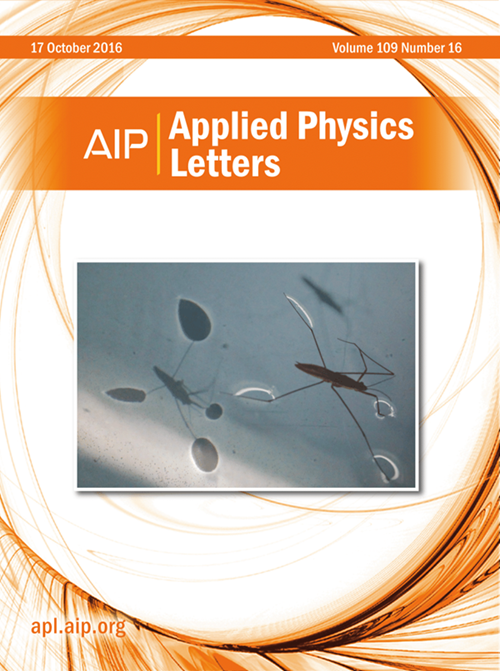用于太阳能驱动的氢气生成和储存的坚固可调氧化物纳米卷
IF 3.5
2区 物理与天体物理
Q2 PHYSICS, APPLIED
引用次数: 0
摘要
氢气由于其高能量输出和对环境安全的副产品,是一种很有前途的化石燃料替代品。人们已经探索了各种形态的光催化材料用于高效制氢,例如,提供更大表面体积比的准一维纳米卷结构。最近,我们预测直接从二硫化物前体中逐层形成稳定的氧化物纳米卷,从而消除了在卷起合成纳米卷时形成昂贵的二维氧化物的需要。在这项研究中,我们评估了这些氧化物纳米卷材料- moo3, WO3, PdO2, HfO2和geo2 -在太阳能驱动光催化制氢和储存中的适用性。利用激发态理论和Bethe-Salpeter方程模拟,我们发现它们的电子和光学性质是层间涡旋间距的函数,并发现它们非常有利于太阳能驱动的光催化。此外,通过从头算分子动力学模拟,我们发现即使在氧化物中存在缺陷和空位的情况下,纳米卷也能有效地捕获氢,因此它们也适用于H2存储。因此,这项工作表明,发现了强大的、可调谐的氧化物纳米卷,作为推进太阳能驱动的氢技术的材料。本文章由计算机程序翻译,如有差异,请以英文原文为准。
Robust and tunable oxide nanoscrolls for solar-driven H2 generation and storage
Hydrogen gas is a promising alternative to fossil fuels due to its high energy output and environmentally safe byproducts. Various morphologies of photocatalytic materials have been explored for high-efficiency H2 production, for instance, quasi-1D nanoscroll structures that provide a larger surface-to-volume ratio. Recently, we predicted layer-by-layer formation of stable oxide nanoscrolls directly from dichalcogenide precursors, eliminating the need for costly formation of two-dimensional oxides for a roll-up synthesis of nanoscrolls. In this study, we evaluate the suitability of those oxide nanoscroll materials—MoO3, WO3, PdO2, HfO2, and GeO2—for solar-driven photocatalytic H2 production and storage. Using excited state theory coupled with Bethe–Salpeter equation simulations, we discern their electronic and optical properties as a function of interlayer scroll spacing and find them to be highly conducive for solar-driven photocatalysis. Additionally, using ab initio molecular dynamics simulations, we show that they are also suitable for H2 storage as the nanoscrolls exhibit an effective trapping of hydrogen, even in the presence of defects and vacancies in the oxides. This work thus demonstrates the discovery of robust and tunable oxide nanoscrolls as materials for advancing solar-driven hydrogen technologies.
求助全文
通过发布文献求助,成功后即可免费获取论文全文。
去求助
来源期刊

Applied Physics Letters
物理-物理:应用
CiteScore
6.40
自引率
10.00%
发文量
1821
审稿时长
1.6 months
期刊介绍:
Applied Physics Letters (APL) features concise, up-to-date reports on significant new findings in applied physics. Emphasizing rapid dissemination of key data and new physical insights, APL offers prompt publication of new experimental and theoretical papers reporting applications of physics phenomena to all branches of science, engineering, and modern technology.
In addition to regular articles, the journal also publishes invited Fast Track, Perspectives, and in-depth Editorials which report on cutting-edge areas in applied physics.
APL Perspectives are forward-looking invited letters which highlight recent developments or discoveries. Emphasis is placed on very recent developments, potentially disruptive technologies, open questions and possible solutions. They also include a mini-roadmap detailing where the community should direct efforts in order for the phenomena to be viable for application and the challenges associated with meeting that performance threshold. Perspectives are characterized by personal viewpoints and opinions of recognized experts in the field.
Fast Track articles are invited original research articles that report results that are particularly novel and important or provide a significant advancement in an emerging field. Because of the urgency and scientific importance of the work, the peer review process is accelerated. If, during the review process, it becomes apparent that the paper does not meet the Fast Track criterion, it is returned to a normal track.
 求助内容:
求助内容: 应助结果提醒方式:
应助结果提醒方式:


